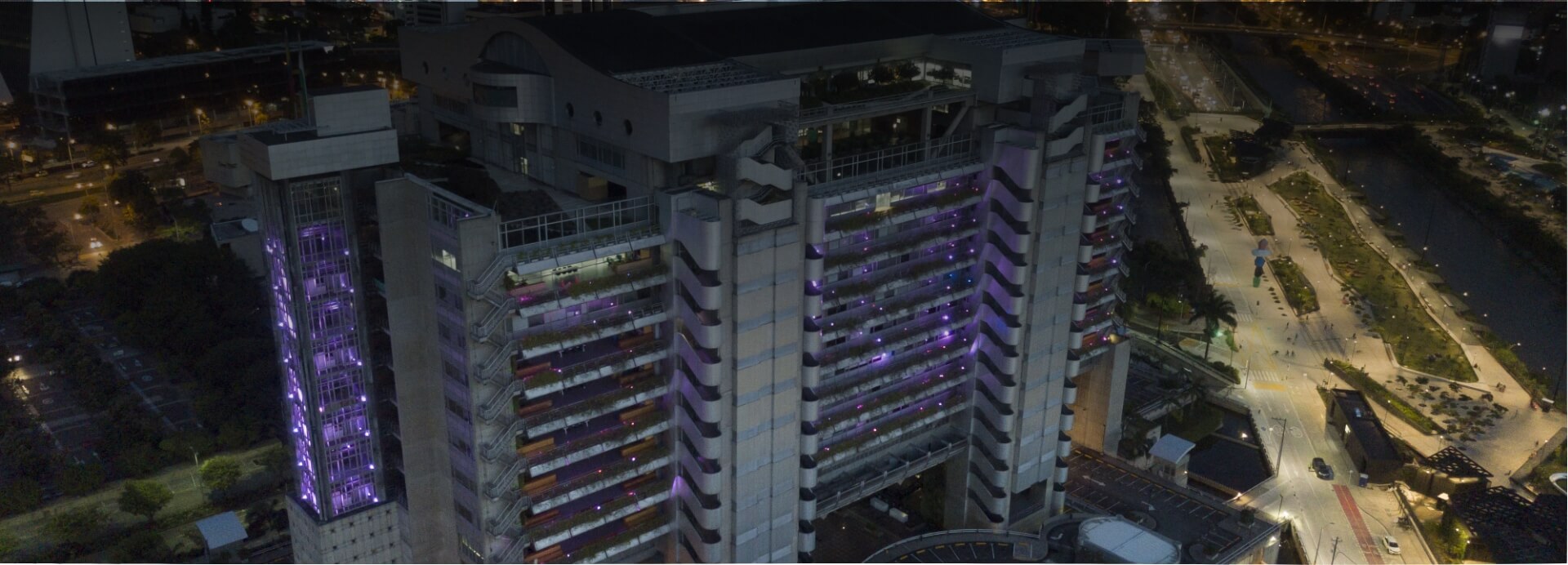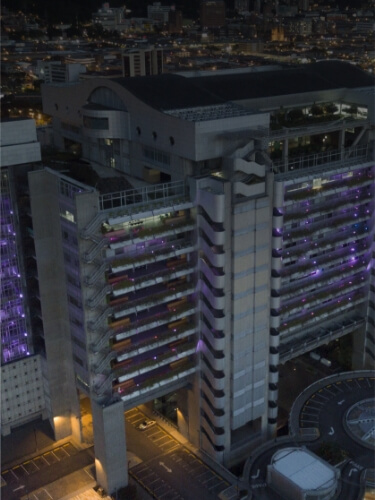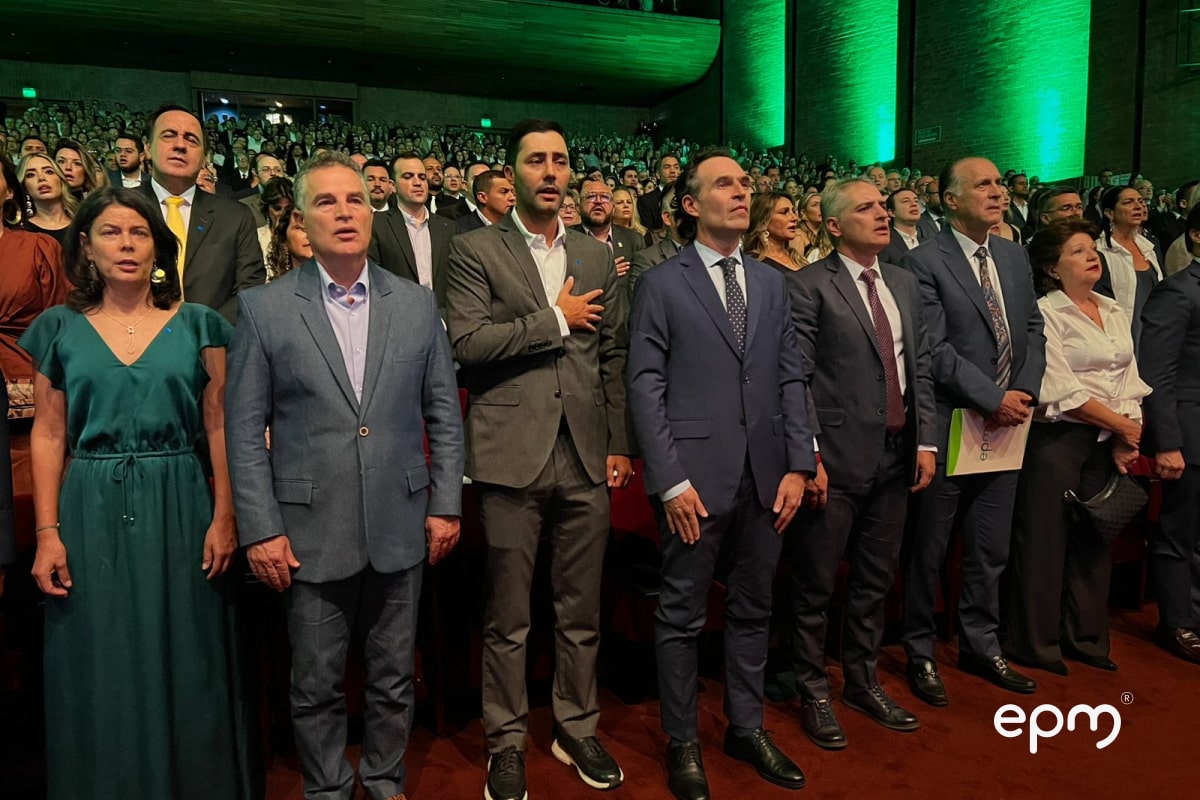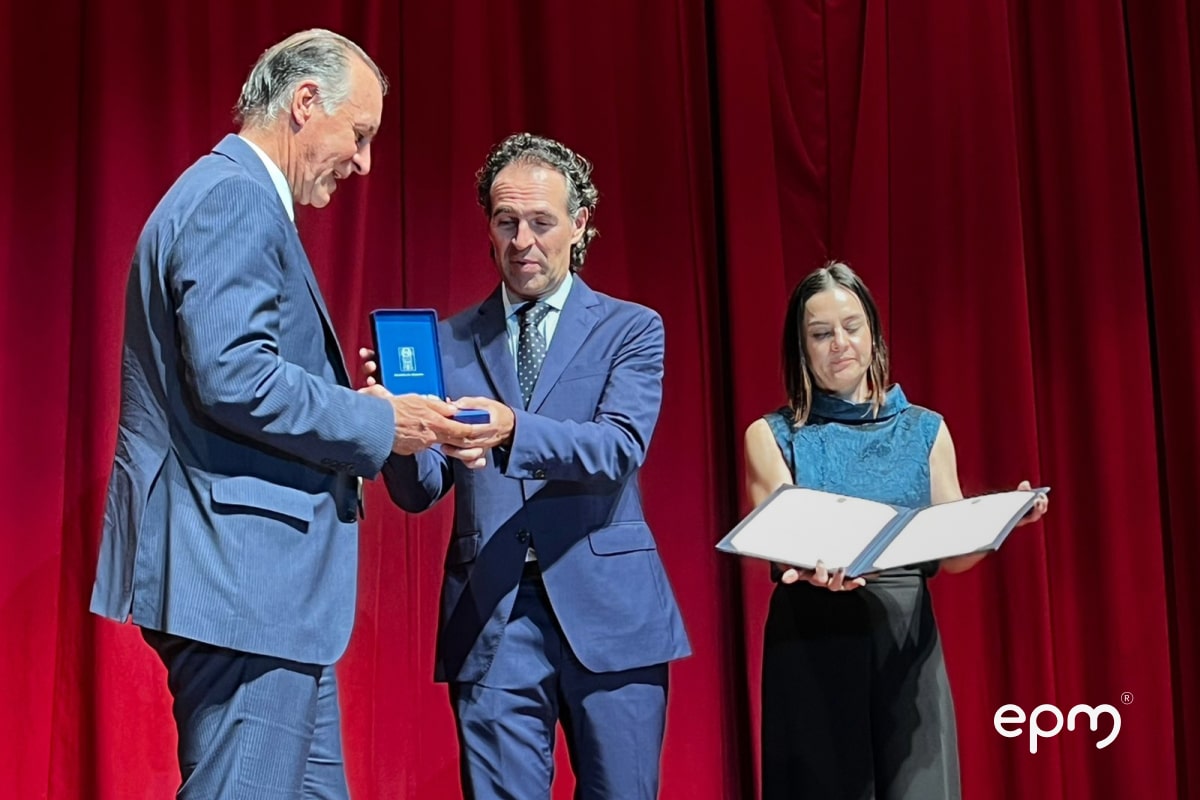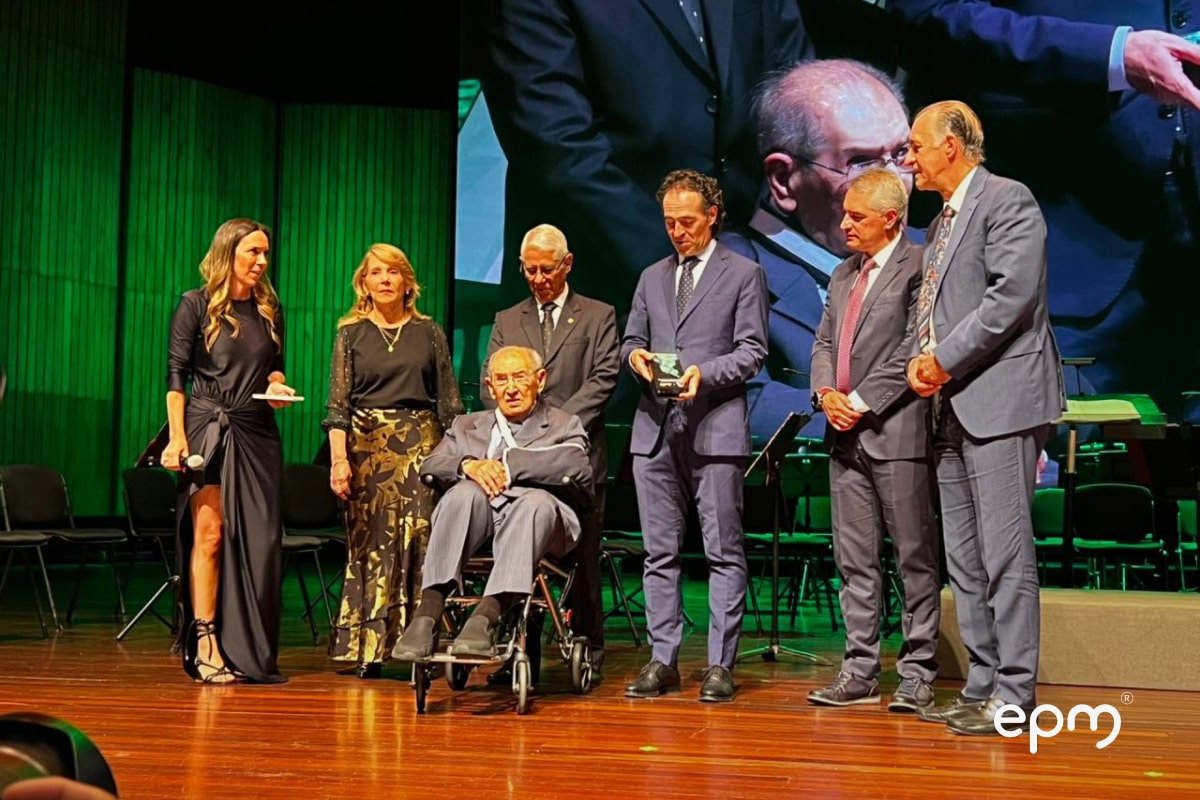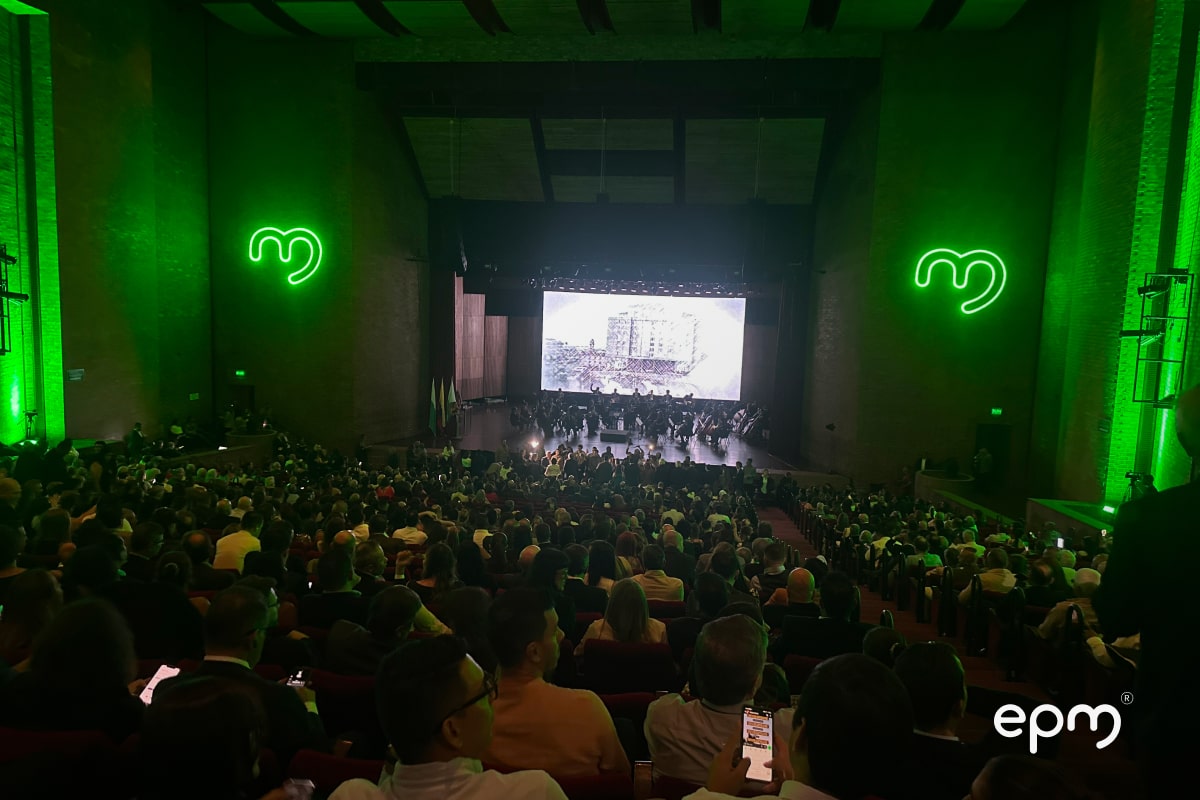EPM Celebrated 70 Years of History and Commitment to Sustainable Development
- Fecha de publicación
- 2025-07-22 00:00
- Contenido
-
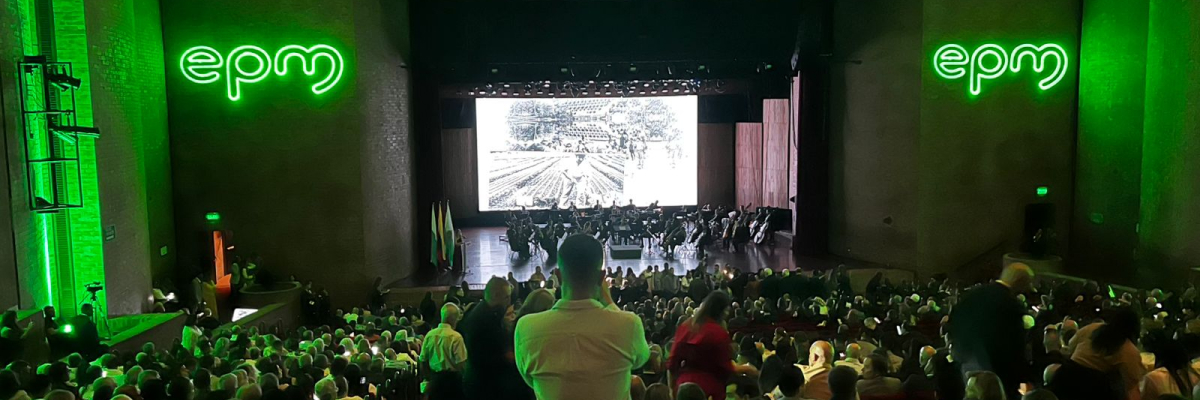
- On Tuesday, July 22, the ceremony commemorating EPM’s 70th anniversary was held
- The Company has been a driving force for development in the areas where it operates
- A space to give thanks for these seven decades of service to the community
On Tuesday, July 22, the José Gutiérrez Gómez Metropolitan Theater in Medellín was adorned in celebration of EPM’s 70-year journey, a company that has served as a key driver of sustainable development across all the regions where it has a presence.
The ceremony was attended by the Governor of Antioquia, Andrés Julián Rendón; the Mayor of Medellín, Federico Gutiérrez Zuluaga; EPM CEO John Maya Salazar, along with national, regional, and local authorities, academics, business leaders, social advocates, Company employees, and representatives from communities that have played an essential role in the creation and development of emblematic projects that have shaped thehistory of the region and the country.
This gathering served as a moment to recognizethe ongoing commitment and strong collaboration between the Company and society, a partnership that has enabled EPM to transform lives, promote comprehensive development, and establish itself as a benchmark in sustainability and well-being.
“Celebrating EPM’s history means looking back at those moments when our utility servicesreached, for the first time, corners where only hope existed. Each project, each connection, is a testament to the collective work and mutual trust between the Company and the communities we have been honored to serve,” said John Maya Salazar, CEO of EPM.
Since its founding on August 6, 1955, EPM has evolved beyond providing utility servicesto become a strategic ally, driving social, economic, and environmental development in the territories where it operates.
EPM: 70 Years Transforming Lives and Territories
“These have been seven decades of engineering devoted to transforming lives, overcoming challenges that demand effort and innovative solutions, and that have brought about moments of profound fulfillment,” said CEO Maya Salazar, as he highlighted some of EPM’s most significant milestones to date:
- The commissioning of the La Ayurá water treatment plant in 1968, the first major drinking water treatment infrastructure in Medellín, increased the capacity to supply safe water for human consumption to more than one million inhabitants. This advancement not only ensured a better quality of life, but also laid the foundation for urban growth and the sustainable development of the region. Today, this plant provides up to 60% of the water required by the interconnected water supply system, serving more than three million users.
- Before the creation of EPM in 1932, the Guadalupe I hydroelectric plant was instrumental in the region’s industrialization process and served as the starting point of the Guadalupe-Troneras (Guatron) hydroelectric chain, made up of the Troneras, Guadalupe 3, and Guadalupe 4 plants. In 1979, the full completion of the El Peñol-Guatapé hydroelectric project marked a key milestone for Colombia and Antioquia. This reservoir, the country’s largest in terms of multi-year regulation capacity, holds a useful volumeof 1.120 thousand million cubic meters across an area of 6,385 hectares, making it one of the largest inland bodies of water in the country. Beyond its hydroelectric role, the reservoir has fueled the local economy through tourism development.
- For 70 years, EPM has contributed to the sanitation of the Aburrá Valley by building an extensive sewer network that today extends 4,900 kilometers, connecting households, businesses, and industries to the treatment system. In 1982, Medellín took on the challenge of restoring the Aburrá-Medellín River through a structured sanitation plan led by EPM. Thanks to the San Fernando and Aguas Claras plants, located in Itagüí and Bello respectively, nearly 92% of the wastewater is now treated, transforming the river from a source of pollution into a vital axis for the city. This transformation process, which involved overcoming technical, social, and environmental challenges, has led to a profound cultural and environmental shift, restoring dignity to the river and improving the quality of life for millions of people.
- In 1993, the Niquía (Bello) and La Tasajera (Barbosa) hydroelectric plants strengthened the regional energy supply (with capacities reaching up to 19 MW and 306 MW, respectively), integrating into the Riogrande II hydroelectric complex to ensure both electricity generation and water supply for purification. These combined projects fostered the sustainable development of Antioquia, guaranteeing a reliable supply of drinking water and energy for its growing population.
- Between 2005 and 2015, EPM expanded access to drinking water and basic sanitation services in additional rural and urban areas of Antioquia through the operation of its affiliates Aguas de Urabá and Regional de Occidente, which extended basic services to historically underserved regions such as Urabá and Occidente. Both companies, which later merged in 2016 to form Aguas Regionales EPM, served municipalities with significant rural and urban populations and critical infrastructure needs. Thanks to their management, service coverage in Antioquia reached nearly 88% in 2013, surpassing the national average. This achievement represented a significant advance in reducing the gaps in access to basic services, especially in rural and peripheral areas of the department.
- Hidroituango has become a symbol of resilience and perseverance for Colombia. Following the 2018 contingency, EPM embarked on a demanding journey to protect communities downstream of the dam and stabilize the project. These were years of rigorous technicalwork, strategic decisions, and an unwavering commitment to safeguarding life and the environment. In 2025, the first four generation units, currently in operation, contribute approximately 8% of the energy consumed in Colombia. The second phase of the project, with four additional generation units, is currently under construction. Once the plant is completed, it will generate 2,400 megawatts of energy, about 17% of the country’s total, contributing to national development and improving the quality of life for millions of Colombians.
- Hidroituango is much more than a hydroelectric plant: it is a true engine of development and hope for the region, protecting the environment and delivering clean, renewable energy to millions of Colombians. With a social and environmental investment of more than COP 2.6 billion, it has driven projects that are transforming the lives of more than 6,000 families in 16 municipalities, supporting their growth with productive initiatives and strengthening the social fabric through social contracting and community organization. Among these initiatives, the following stand out: 1,500 kilometers of new and rehabilitated roads, 121 educational institutions (both new and upgraded), 739 families with new or improved housing, 800 new wooden homes built through the Aldeas program, and the strengthening of 527 productive projects.
- In environmental terms, Hidroituango protects more than 24,000 hectares of tropical forest, preserving biodiversity and connecting vital ecosystems, while working closely with communities to restore and conserve their surroundings.
- EPM is also a key engine of Medellín’s development; in 2024 alone, it contributed nearly COP 2 billion in surplus to the district, which was allocated to infrastructure, education, and sustainability projects aimed at continuously improving the quality of life of its residents.
A Future with Vision and Leadership
With operations in Antioquia, the Coffee Region, Santander, the Caribbean Region, and international markets including Mexico, Guatemala, El Salvador, Panama, and Chile, EPM connects communities and drives progress.
The Company remains a pioneer in integrating technology and sustainability into its operations. From the first wind farm in Colombia (Jepírachi in La Guajira -2004), the construction of mini hydroelectric plants to the recent inauguration of the biomethane plant (2023) and the Tepuy photovoltaic solar park (2024), EPM is leading Colombia’s transition toward clean and renewable energy.
Today, 70 years after its founding, EPM remains 100% publicly owned. Its vision is focused on the future, with flagship projects such as hydrogen production, the expansion of renewable energy, and digital transformation, which reinforce its role as a benchmark in the sector.
“Seventy years ago, EPM envisioned a sustainable future, and today that dream is a reality we continue to build with every action, every project, and every community that benefits from our services,” concluded John Maya Salazar, CEO of EPM.
Hidroituango Documentary
During the event celebrating its 70th anniversary,EPM launched the documentary *La Historia de Hidroituango*, presenting the trailer and the first of the nine chapters that make up the production. The documentary highlights the tenacity of workers in confronting engineering and environmental challenges, the support of variouspublic and private entities, and the pivotal role of communities in transforming the territoryand improving their quality of life.
The documentary *La Historia de Hidroituango* will be screened in multiple venues across Medellín, including Parque de los Deseos, the UVAs, and the Museum of Modern Art. It will also be available on EPM’s social media channels and website at the following link: https://acortar.link/VoKfPo (Available in Spanish and coming soon in English)
EPM: 70 Years TogetherAs
part of its 70th anniversary celebration, EPM selected 70 stories and 70 milestones, told through the voices of their protagonists in short video clips. The publication launched on May 28 and will continue through August 6, the Company’s official anniversary. The stories can be accessed at this address: https://acortar.link/XrajTD (Availableonlyin Spanish)

